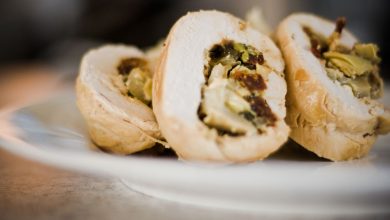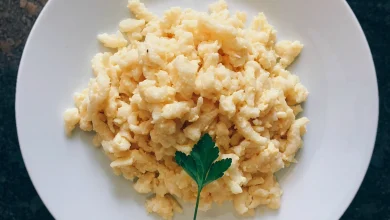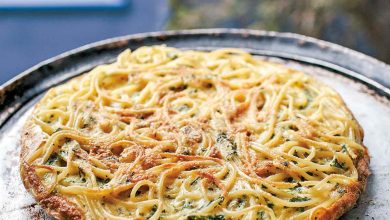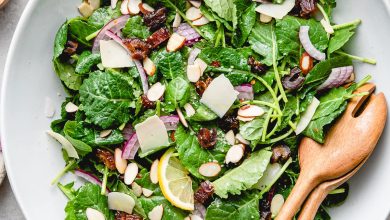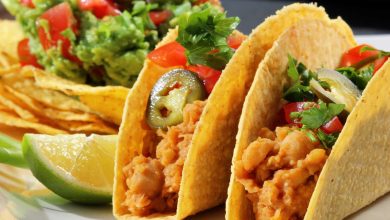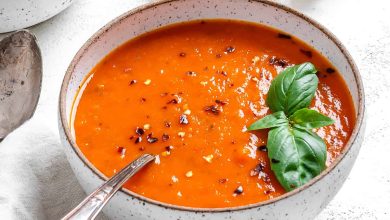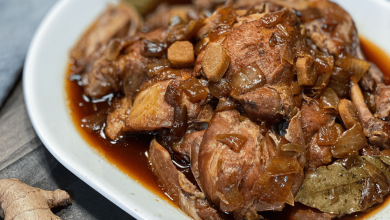Pigless Rolls: A Plant-Based Delight
Formal Explanation
Introduction:
Pigless rolls are a delectable and innovative plant-based alternative to traditional pork spring rolls. These rolls are perfect for those who follow a vegetarian or vegan diet and for anyone looking to explore new, sustainable, and cruelty-free culinary experiences. Pigless rolls offer a satisfying blend of flavors and textures, making them a delightful appetizer or main course.
History:
The history of pigless rolls can be traced back to the rise of vegetarian and vegan diets, as well as the growing awareness of the environmental and ethical issues associated with meat production. Chefs and home cooks alike began experimenting with plant-based ingredients to recreate traditional dishes, leading to the development of pigless rolls. While the exact origin is challenging to pinpoint, it’s safe to say that they emerged in response to the demand for more sustainable and compassionate food options.
Components:
Pigless rolls comprise several key components:
-
Rice Paper Wrappers: These translucent, round sheets of rice paper serve as the outer layer of the rolls, providing a soft and chewy texture.
-
Filling: The filling for pigless rolls is a harmonious mixture of vegetables, protein sources, and herbs. Common ingredients include julienned carrots, cucumber, bell peppers, avocado, lettuce, and fresh herbs like mint and cilantro. Protein sources can include tofu, tempeh, or marinated seitan.
-
Dipping Sauce: A flavorful dipping sauce is essential to enhance the overall taste. A classic sauce might include soy sauce, hoisin sauce, rice vinegar, garlic, and chili paste for a balance of savory, sweet, tangy, and spicy flavors.
Steps to Prepare Pigless Rolls:
Creating pigless rolls is a creative and rewarding culinary endeavor. Here are the steps to prepare them:
Casual Instructions:
Step 1 – Prep Ingredients:
Gather your favorite veggies and protein source. Wash and slice them into thin strips. Arrange fresh herbs, like mint and cilantro, for added freshness.
Step 2 – Soak Rice Paper:
Fill a large shallow bowl with warm water. Dip one rice paper sheet in the water for about 5-10 seconds until it softens. Place it on a clean, damp kitchen towel.
Step 3 – Add Fillings:
Lay your choice of veggies, protein, and herbs in the center of the rice paper, leaving space on the sides. Fold in the sides, then roll up tightly, similar to wrapping a burrito.
Step 4 – Prepare Dipping Sauce:
In a small bowl, mix soy sauce, hoisin sauce, rice vinegar, crushed garlic, and a touch of chili paste. Adjust the ingredients to taste.
Step 5 – Serve:
Slice the pigless rolls in half diagonally and arrange them on a plate. Serve with the dipping sauce on the side.
Time Required:
The preparation time for pigless rolls can vary depending on your experience and the number of rolls you intend to make. On average, it takes about 30-45 minutes to prepare a batch of 10 rolls. This includes prep time for slicing vegetables and assembling the rolls.
In conclusion, pigless rolls are a delightful and cruelty-free twist on traditional spring rolls, offering a flavorful and sustainable dining experience. With a bit of creativity and fresh ingredients, you can whip up this plant-based treat in no time, making it a perfect addition to your menu for a healthy and compassionate meal. Enjoy!
Nutrition Facts and Health Information for Pigless Rolls
Formal Explanation
Pigless rolls are not only a delicious culinary delight but also a nutritious and health-conscious choice. This plant-based alternative offers a range of health benefits, and here we present an overview of their nutrition facts and key health information:
Nutrition Facts (per serving, approximately 2 rolls):
-
Calories: Pigless rolls typically contain around 150-200 calories per serving, making them a reasonable choice for those mindful of their calorie intake.
-
Protein: A serving of pigless rolls provides about 4-6 grams of protein, depending on the protein source used (tofu, tempeh, or seitan). Protein is essential for muscle health and overall body function.
-
Carbohydrates: Pigless rolls are carbohydrate-rich, with approximately 30-35 grams of carbs per serving. The primary source of carbohydrates is the rice paper and the vegetables used in the filling, providing energy for your body.
-
Dietary Fiber: These rolls are a good source of dietary fiber, offering about 3-4 grams per serving. Fiber aids digestion, promotes a feeling of fullness, and supports digestive health.
-
Healthy Fats: While pigless rolls are generally low in fat, they do contain some healthy fats from sources like avocados or oils used in the dipping sauce. A typical serving might have 4-5 grams of fat.
-
Vitamins and Minerals: Pigless rolls are rich in vitamins and minerals, especially vitamin C from ingredients like bell peppers and cucumbers. They also provide essential nutrients like vitamin K from leafy greens, folate from herbs, and various antioxidants.
-
Sodium: The sodium content can vary depending on the dipping sauce and soy sauce used, but on average, a serving contains about 300-400 milligrams of sodium. It’s essential to be mindful of sodium intake, especially if you have dietary restrictions.
Health Information:
-
Low in Saturated Fat: Pigless rolls are a heart-healthy option as they are low in saturated fats, which can contribute to heart disease when consumed in excess.
-
High in Fiber: The dietary fiber content in pigless rolls promotes digestive health, helps maintain healthy cholesterol levels, and aids in weight management.
-
Rich in Antioxidants: The variety of colorful vegetables and fresh herbs used in pigless rolls are rich in antioxidants, which help protect cells from damage caused by free radicals.
-
Vegan and Cholesterol-Free: Pigless rolls are entirely plant-based and cholesterol-free, which can be beneficial for heart health.
-
Protein Source: Depending on the protein source used, pigless rolls can provide a good amount of plant-based protein, making them suitable for vegetarians and vegans.
-
Gluten-Free Option: By using gluten-free soy sauce or tamari and ensuring the protein source is gluten-free (e.g., tofu or tempeh), pigless rolls can be made gluten-free for those with gluten sensitivities or allergies.
In summary, pigless rolls are a nutritious and flavorful choice for those seeking a healthy, plant-based meal. They offer a balanced mix of macronutrients, essential vitamins, and minerals while being low in saturated fat and cholesterol. Including pigless rolls in your diet can contribute to overall health and well-being.

